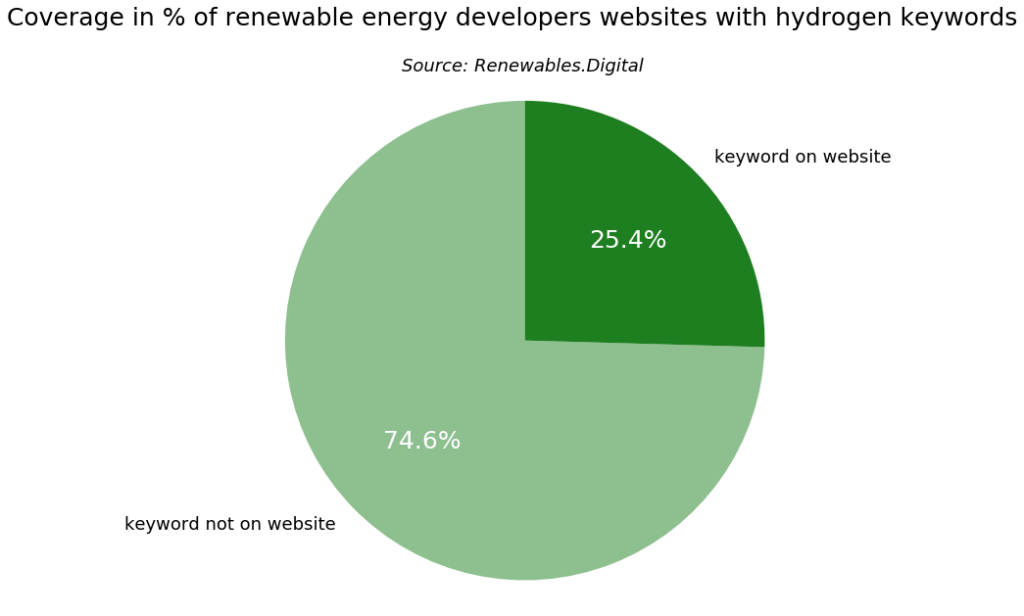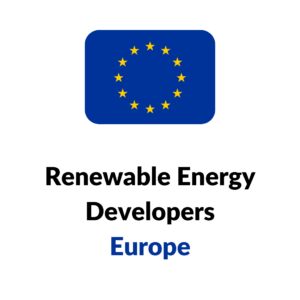Green hydrogen holds an important position in the energy industry worldwide. While hydrogen is the most abundant chemical element on the planet, the market for green hydrogen is (still) relatively new. Green hydrogen is produced by the electrolysis of water – in this process water is separated into the components oxygen and hydrogen, only using renewable energy. In contrast to so-called ‘grey hydrogen’, the use of green hydrogen has no CO2 emissions, as the only by-product is water. This way of production is also an interesting opportunity for renewable energy which currently often has to be curtailed due to limited transmission capacities.
Reducing CO2 emissions: Green hydrogen in industrial production
The industrial use of green hydrogen is a very important step in the fight against climate change. The industrial production of ammonia, steel and methanol uses hydrogen, at the time mostly grey hydrogen which in return produces a ton of CO2. Other industrial sectors such as refineries or transport also could benefit greatly from switching to green hydrogen regarding CO2 emissions.
Energy storage through green hydrogen projects
Regarding renewable energy, green hydrogen particularly relevant and promising for large-scale and long-term electricity storage applications, for example for energy generated from other renewable sources such as wind or solar energy. When energy is needed, the hydrogen stored in special tanks is channeled into a fuel cell. Here, through contact with air, a bond is again achieved between oxygen and hydrogen, whereby energy is obtained. In addition, and probably the more well-known application for hydrogen, is the possibility of using the green-derived hydrogen as a sustainable fuel.
Future outlook: Political support for green hydrogen
This shows that green hydrogen projects are a very exciting and, above all, promising area where it is worth taking a closer look. The EU has already adopted a package in 2021 that includes proposals to set targets for the uptake of renewable hydrogen in industry and transport by 2030.
However, it is not only political support and driving investment in this area that is highly relevant, but also the expertise of project developers to know how to add green hydrogen to the energy mix. How hydrogen projects can look and be designed or how storage systems can be connected to the power grid is therefore one of the tasks of European project developers.
Keyword study on European project developers

The crawler results show that over 25% of the renewable energy project developers studied mention the keyword ‘hydrogen’ or ‘green hydrogen’. The fact that more than a quarter of the listed project developers mention the keyword at least once shows how highly relevant the topic of green hydrogen is. Over 15% of them mention this topic more frequently and mention hydrogen at least 10 times.
Germany, UK, Spain and Denmark as European green hydrogen pioneers
The most mentions come from project developers in the UK, Germany and Spain. However, these three countries are also most frequently represented in the list – looking at the percentage of mentions, it can be seen that Denmark in particular has a high rate of hydrogen mentions. At the moment, hydrogen is also still in the initial stages in Denmark, although clear political goals are evident here: According to the country’s national hydrogen strategy, Denmark aims to produce 1.3 million tonnes of green hydrogen by 2030, which would make up approximately 5% of the country’s total energy consumption. The European Union has launched a Clean Hydrogen Alliance, which brings together industry, government, and other stakeholders to work together to create a sustainable and competitive hydrogen economy in Europe. Overall, it can be said that green hydrogen will play an increasingly important role in most European countries.
List of 3 green hydrogen developers from Europe
The article above show that green hydrogen will play a growing role in the future. Project developers are necessary to implement hydrogen projects into the renewable energy market and thus leading the path to a decarbonized economy. In the following, three European project developers developing green hydrogen projects will be presented:
1. Protium – London, UK
Protium is a renewable energy project developer with hedquarters in London. The company specializes in the development and delivery of large-scale green hydrogen projects. The company provides end-to-end solutions, starting with the production of green hydrogen with the help of other renewable energy sources (e.g. wind or solar energy). Protium then supports the decarbonisation of heat, power and transportation by providing green hydrogen. One flagship project is the HyNet North West project, which aims to create the UK’s first low-carbon hydrogen network. The project involves the development of a hydrogen production facility, as well as the construction of hydrogen pipelines to transport the gas to industrial and commercial users in the North West of England.
2. Gen2 Energy – Borre, Norway
Gen2 Energy is a Norwegian renewable energy company headquartered in Borre. Founded in 2014, the company is focused on developing green-hydrogen solutions in Norway and Scandinavia. With the goal to be the world’s first provider of a certified Green Hydrogen-as-a-Service, Gen2 offers ‘plug-and-play’ solutions. At the moment the project developer works on three main projects – a green hydrogen facility in Suldal in the Ryfylke region, two project facilities in Mosjøen (Helgeland) and a facility in Meråker (Trøndelag). The projects are planned to be in production in 2024 and 2025.
3. Greenstat – Bergen, Norway
Greenstat is one of the best-known renewable energy companies in Scandinavia. The company has its headquarters in Bergen and was founded in 2016. With a geographical focus on Norway, but also with projects in Europe and Asia, the company develops not only wind and solar projects but also green hydrogen projects. Greenstat works closely with other companies in the hydrogen market (e.g. Nel, Everfuel, Norwegian Hydrogen or even Gen2Energy). Most of their projects are in the transportation and maritime sector, leading the way to decarbonize the Norwegian economy.
Image Source: David Becker via Unsplash (07.03.2023)





